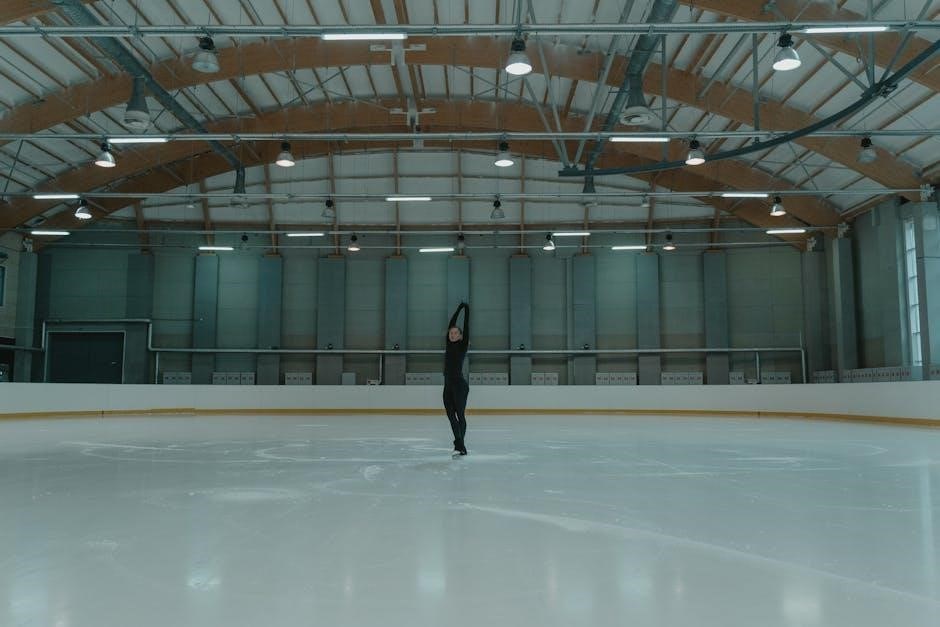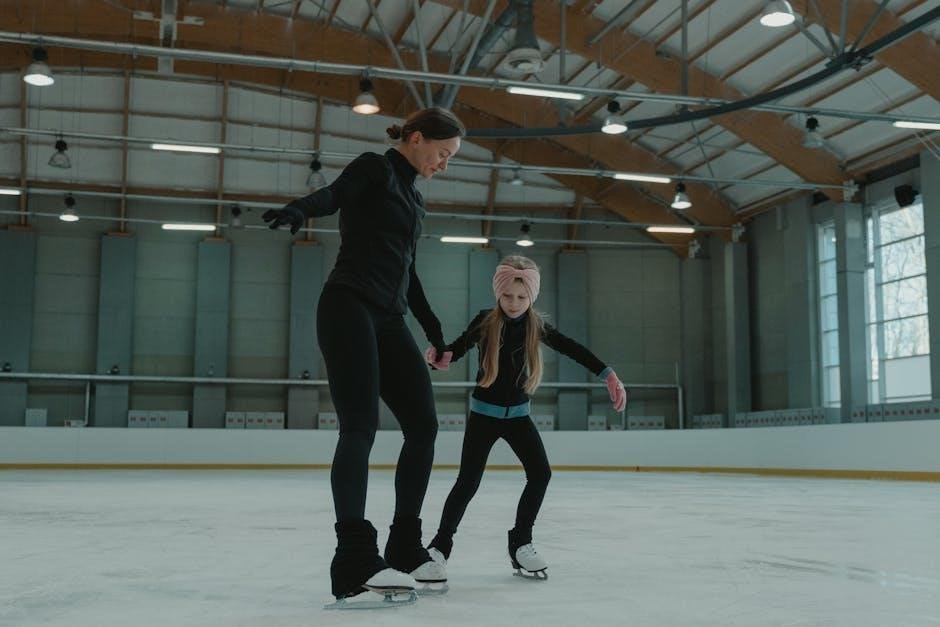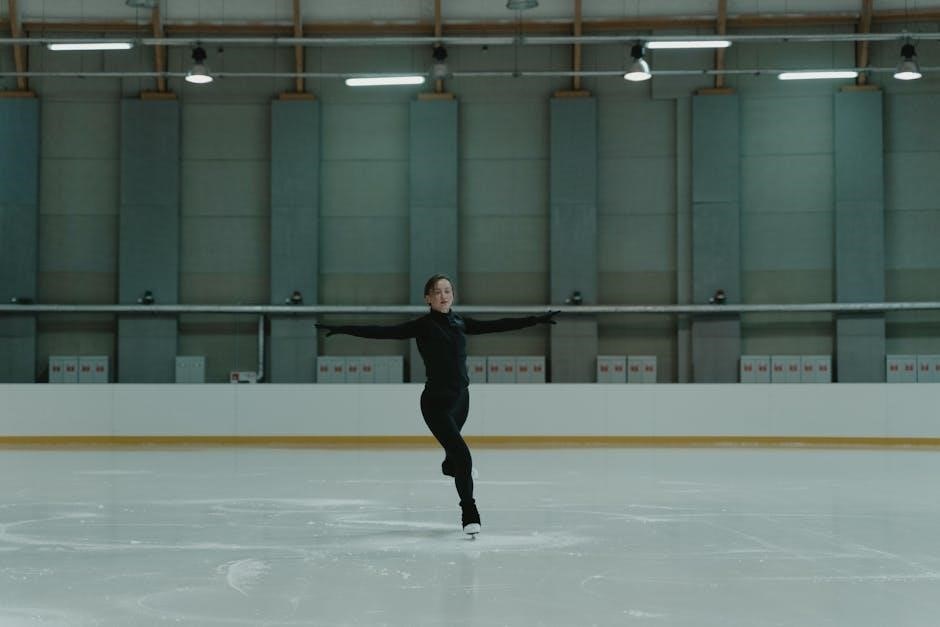Meniscus exercises are essential for enhancing knee stability, reducing pain, and promoting healing. These structured routines, often detailed in PDF guides, provide comprehensive recovery plans for knee health.
Understanding the Meniscus and Its Importance
The meniscus is a cartilage structure in the knee joint, acting as a cushion between the thigh and shin bones. It plays a vital role in absorbing shock, stabilizing the knee, and facilitating smooth movement. Injuries to the meniscus, such as tears, can lead to pain, swelling, and limited mobility. Understanding its function helps in appreciating the need for targeted exercises to restore knee health and prevent further damage. A healthy meniscus is essential for maintaining normal knee function and overall mobility.
Common Causes of Meniscus Injuries
Meniscus injuries often result from traumatic events, such as twists or direct blows to the knee, commonly seen in sports. Degenerative tears occur due to wear and tear over time, especially in older individuals. Activities that involve repetitive knee bending, like running or jumping, can also strain the meniscus. Additionally, sudden movements or poor knee alignment may lead to tears. Understanding these causes helps in adopting preventive measures and tailoring exercises to address specific injury types effectively.

The Role of Exercises in Meniscus Recovery
Exercises play a crucial role in meniscus recovery by strengthening surrounding muscles, improving joint stability, and restoring function. They also help reduce pain and prevent future injuries.
How Exercises Strengthen the Knee Joint
Exercises strengthen the knee joint by targeting the surrounding muscles, such as the quadriceps and hamstrings, which provide stability and support. Strengthening these muscles helps distribute weight more evenly, reducing pressure on the meniscus. Improved muscle tone enhances joint alignment and reduces the risk of further injury. Additionally, exercises promote blood flow, aiding in the healing process and maintaining cartilage health. Regular practice also restores functional movement, enabling activities like walking, climbing stairs, and returning to sports safely and effectively.
Physical Therapy (PT) for Meniscus Tears
Physical therapy plays a vital role in recovery from meniscus tears, focusing on restoring knee function and strength. A tailored PT program often includes exercises like straight leg raises, step-ups, and balance training to improve mobility and stability. Supervised sessions ensure proper technique and progression, reducing the risk of further injury. Additionally, PT addresses muscle imbalances and promotes healing, helping patients regain functional abilities and reduce pain. Regular adherence to a structured plan, often outlined in meniscus exercises PDF guides, supports long-term recovery and enhances overall knee health.

Types of Meniscus Exercises
Meniscus exercises are categorized into early-stage and advanced routines. Early-stage exercises focus on pain relief and basic mobility, while advanced exercises target strength and functional movement, guided by structured PDF plans.
Early-Stage Exercises for Pain Relief
Early-stage meniscus exercises focus on reducing pain and inflammation while improving basic knee mobility. Gentle routines like straight leg raises, heel slides, and mini squats are commonly recommended. These exercises strengthen surrounding muscles without putting excessive strain on the injured meniscus. They are often performed in a controlled, non-weight-bearing manner to minimize discomfort. A physical therapist may guide patients through these initial steps, ensuring proper form and progression. Consistency in performing these exercises can significantly aid in pain relief and prepare the knee for more advanced movements. Early intervention sets the foundation for a successful recovery journey.
Advanced Exercises for Strength and Mobility
Advanced exercises target strength and mobility once initial pain subsides and basic function is restored. These include single-leg balances, step-ups, and dynamic stretches to enhance knee stability and range of motion. Strengthening the quadriceps and hamstrings is crucial for supporting the knee joint. Patients typically progress to weight-bearing exercises and functional movements that mimic daily activities. Supervision by a physical therapist ensures proper technique and avoids re-injury. These exercises aim to restore full mobility and strength, enabling a return to normal activities or sports. Consistency and gradual progression are key to achieving long-term knee health.

Safety and Precautions
Exercises must be performed with caution to avoid aggravating the injury. Pain should not be pushed beyond mild discomfort, ensuring a safe recovery process;
Understanding Pain Limits During Exercises
Recognizing pain thresholds is crucial during meniscus exercises. Mild discomfort is expected, but sharp pain indicates overexertion. Patients should stop immediately if pain exceeds a manageable level, as this could worsen the injury. It’s essential to communicate these sensations to a physical therapist, ensuring exercises remain therapeutic without causing further damage. Balancing progress with caution prevents setbacks and supports a safer recovery journey. Always prioritize pain-free movements to foster healing and maintain knee stability.
Importance of Supervision by a Physical Therapist
A physical therapist plays a vital role in guiding meniscus exercises, ensuring proper form and technique. They tailor routines to individual needs, preventing overexertion and injury. Supervision helps patients avoid exercises that might worsen a tear, while promoting optimal healing. Therapists also track progress and adjust plans as recovery advances. Their expertise minimizes risks and maximizes effectiveness, making supervised rehabilitation a cornerstone of successful meniscus recovery. This personalized approach fosters a safer and more efficient path to restored knee function and mobility.
Progressing with Meniscus Exercises
Progressing with meniscus exercises involves gradually increasing intensity and introducing advanced movements. A physical therapist guides this process, ensuring exercises are safe and effective for recovery.
Advancing exercise intensity in meniscus rehabilitation requires careful assessment. Key criteria include pain levels, functional improvement, and strength gains. Patients should demonstrate increased knee stability and range of motion. Therapists evaluate whether exercises can be performed without discomfort or instability. Progression is gradual, ensuring the knee can handle more stress without risking further injury. Supervised sessions help tailor intensity to individual recovery stages, promoting safe and effective healing. Each step is personalized to avoid setbacks and optimize outcomes. Certain exercises should be avoided during meniscus recovery to prevent further injury. High-impact activities, deep knee bends, and pivoting movements can exacerbate tears. Patients with acute pain or swelling should steer clear of weight-bearing exercises initially. Twisting motions and aggressive stretching may also be harmful. It’s crucial to follow a physical therapist’s guidance to determine which exercises are safe and appropriate based on the injury’s severity and healing progress. Avoiding risky movements ensures a safer and more effective recovery process. A meniscus exercises PDF guide offers accessibility, convenience, and structured recovery plans. It provides clear instructions, visual aids, and progressive routines, ensuring a safe and effective rehabilitation journey. A meniscus exercises PDF guide ensures easy access to recovery routines from any device. Its downloadable format allows users to follow structured plans anywhere, promoting consistency. With clear instructions and visual aids, it simplifies understanding and execution of exercises. This convenience enables individuals to adhere to their rehabilitation schedule without relying on physical copies, making it a practical tool for home or gym use. The guide’s portability and user-friendly design make it an invaluable resource for managing meniscus recovery effectively. Meniscus exercises PDF guides offer organized recovery plans tailored to individual needs. They outline progressive routines, from initial pain relief to advanced strength-building exercises. These plans are divided into phases, ensuring a gradual and safe approach to healing. By providing clear timelines and exercise sequences, PDF guides help users stay on track and achieve optimal recovery outcomes. This structured format minimizes confusion and maximizes adherence, making the rehabilitation process more effective and manageable for those with meniscus injuries. Regular updates and customizable options further enhance their utility. Supervised rehabilitation ensures personalized guidance and proper technique, reducing injury risks and enhancing recovery. A physical therapist tailors exercises to individual needs, promoting faster and safer progress. A physical therapist plays a crucial role in meniscus recovery by designing personalized exercise plans, improving joint mobility, and strengthening surrounding muscles. They assess injury severity, set realistic goals, and monitor progress to ensure safe and effective healing. Therapists also educate patients on proper techniques, preventing further damage. Their expertise in rehabilitation helps patients regain functional movement and reduce pain, making them indispensable in the recovery journey. Regular supervision ensures exercises are performed correctly, optimizing outcomes and restoring knee function. Treatment options for meniscus tears include surgery or exercise-based recovery; Surgery may be necessary for severe tears, while exercises often suffice for minor injuries, aiming to restore knee function and mobility. Surgery and exercise-based recovery are two primary treatment options for meniscus tears. Surgery is often recommended for severe tears causing significant pain or instability, while exercise-based recovery is ideal for minor tears. Studies show that supervised physical therapy can be as effective as surgery for some patients, promoting natural healing and restoring knee function. The choice between these options depends on the tear’s severity, patient lifestyle, and long-term goals. A personalized approach ensures the best outcomes for recovery and knee health. Rehabilitation outcomes depend on factors like tear severity, patient adherence to exercises, and overall knee health, influencing the effectiveness of the recovery process. The success of meniscus recovery is influenced by several factors, including the severity of the tear, patient adherence to prescribed exercises, and overall knee health. The size and location of the tear, as well as the patient’s age and weight, also play a role. Proper supervision by a physical therapist and consistent performance of exercises tailored to the injury can significantly enhance outcomes. Additionally, lifestyle factors such as nutrition and activity levels contribute to the effectiveness of the rehabilitation process. Post-operative care involves specific exercises to promote healing and restore knee function after meniscus surgery. These routines, often detailed in PDF guides, focus on strengthening and mobility. After meniscus repair surgery, gentle exercises are crucial to restore knee mobility and strength. Straight leg raises and heel slides are often recommended to improve range of motion. Patients should avoid weight-bearing activities initially and progress gradually under a physical therapist’s guidance. Strengthening exercises targeting the quadriceps and hamstrings are introduced as healing advances. Consistency and adherence to a structured PDF guide ensure optimal recovery and prevent re-injury. Supervision by a healthcare professional is essential to monitor progress and adjust routines as needed. Complementary approaches, such as nutrition and mental health strategies, support meniscus recovery. Proper diet aids tissue repair, while a positive mindset enhances adherence to exercise routines. Consulting a therapist can further personalize recovery plans, ensuring holistic healing and optimal knee function. Proper nutrition and lifestyle choices play a crucial role in knee health and meniscus recovery. A balanced diet rich in anti-inflammatory foods, omega-3 fatty acids, and essential vitamins supports tissue repair. Foods like fish, nuts, and leafy greens can reduce inflammation and promote healing. Maintaining a healthy weight reduces stress on the knee joint, while hydration aids in cartilage health. Avoiding smoking and excessive alcohol consumption further supports recovery. Additionally, regular sleep and stress management contribute to overall well-being, enhancing the effectiveness of meniscus exercises and rehabilitation efforts. A positive mental attitude and recovery mindset are vital for overcoming meniscus injuries. Stress and anxiety can hinder progress, while resilience and determination accelerate healing. Setting realistic goals and celebrating small achievements helps maintain motivation. A structured routine, including mindfulness practices like meditation, can reduce stress and improve focus. Additionally, building a supportive network with family, friends, or support groups enhances emotional well-being. A proactive approach to mental health ensures a more effective and sustainable recovery process, complementing physical exercises and therapies. Consistent practice of meniscus exercises, guided by professionals, enhances knee function and promotes overall recovery. A well-structured approach ensures long-term benefits, improving mobility and reducing pain effectively. Meniscus exercises are vital for restoring knee function, alleviating pain, and preventing future injuries. They strengthen surrounding muscles, improve joint stability, and promote healing. Regular practice enhances mobility and reduces stiffness, while tailored routines from a PDF guide ensure a structured approach. Consistency and proper form are key to maximizing benefits and achieving long-term knee health. These exercises are a cornerstone of recovery, offering a non-invasive path to rehabilitation and improved quality of life for individuals with meniscus-related issues.Criteria for Advancing Exercise Intensity
When to Avoid Certain Exercises
Benefits of a Meniscus Exercises PDF Guide
Accessibility and Convenience
Structured Recovery Plans

Importance of Supervised Rehabilitation
Role of a Physical Therapist in Recovery
Treatment Options for Meniscus Tears
Surgery vs. Exercise-Based Recovery

Rehabilitation Outcomes
Factors Influencing Recovery Success
Post-Operative Care and Exercises
Exercises After Meniscus Repair Surgery

Complementary Approaches
Nutrition and Lifestyle for Knee Health
Mental Health and Recovery Mindset
Summarizing the Importance of Meniscus Exercises
